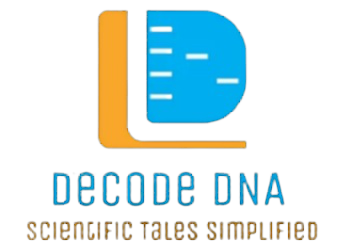Have you ever wondered what are the most effective study techniques for students? Well, there may be so many of them, but among the ones that stand out is mind mapping. You must be in a maze and trying to figure out what it may mean unless you have read the book “Use Your Head” by Tony Buzan, an English author and an educational consultant. So, let us find out a bit about the mind map.
Mind map – things to know
A mind map comprises information that is presented graphically instead of the traditional notes taken on paper and text documents. The major benefit it has over linear note-making is that it helps students gather ideas and thoughts as well as the major facets of studies on a blank canvas. Initially, the ideas are to be organized within a two-dimensional structure with the primary idea at the middle of the map for better viewing. The ideas that are related to the main idea emerge from the centre and spread to different corners.
Benefits of mind mapping
Yes, mind mapping has some enduring benefits for students, but you need to know what makes it a tool apart from the rest. What exactly are the advantages of mind mapping? Let us find out below:
- A tool for improving memory
While traditional note-making becomes more of a humdrum as there is a lack of clear image, eventually making it difficult to get hold of the bigger picture. Mind mapping is believed to keep both hemispheres of the brain active and results ina more holistic understanding of the subject matter. Thanks, the visual layout, allows students to figure out the relationships between the ideas and how valuablethey would be for the overall framework. For PhD students, scientific writing may seem easier with this amazing creative layout.
- Learning new concepts
Based on the recommendation of researchers, learning techniques differ. For instance, non-learning techniques are where the learner hears something and forgets everything the very next moment.
Next is rote learning, where you do not recall the information because the concept is not connected to anything else. Finally, you have meaningful learning techniques where concepts are interconnected. Now, mind mapping promotes meaningful learning techniques, and the learners are encouraged to create connections between existing and new knowledge. The more you connect, the better it is for students to get a grasp.
- Improving creativity
For students trying to get a grasp of effective study techniques, one that fosters creativity plays a crucial role. With mind mapping, the non-linear mode of studying, students get an opportunity to brainstorm and learn to generate ideas, which in turn fosters creativity. Suppose you start with creative writing; the first step would be to sketch the central idea or the theme of the write-up and then let your imagination run wild and branch from the main theme. That’s how students can explore more and create engaging write-ups.
- Boost the power of retaining information
One of the biggest challenges many students face is forgetting most of what they hear. No matter what the underlying causes are, incorporating those efforts into the mind map model makes it easy to remember. The ability to retain information comes out of the opportunity to engage with what they learn and benefits them eventually.
- Inspires more learning
Students are seldom proactive when it comes to learning and processing information. However, with the mind mapping technique, they can organise their thoughts into inspirational diagrammatic formats and rev up their productivity levels. If you are someone aspiring for improved learning techniques and enhanced productivity levels, the results may improve almost instantly.
- Remove the potential learning barriers
Revising through scores of pages containing information is a hard nut to crack during PhD thesis writing. That is why many of them today are resorting to PhD thesis writing services to ease the burden. However, to overcome the learning barriers, getting help through the mind map model makes real sense. That way, you can grab the most effective techniques of learning.
- Simplifying complex concepts
How about managing complex concepts during learning? You may continue to struggle endlessly when getting a grip on complex concepts, but simplifying them would be easier than you think. Thanks to mind mapping. Through this technique, you can break down chunks of information into smaller portions and explore the relationships among them.
Mind maps are a highly effective technique used for processing and structuring information. While expanding ideas from the central theme, the information becomes easy to absorb. While the concept of mind mapping has grown over the years since its inception in 1974, it is slated to go further ahead for those who are willing to make the most out of it.
For scientific writing tasks, you need to collaborate with Decode DNA, one of the renowned PhD writing services based in Delhi that helps students cope with all their writing tasks. Navigate here https://decodedna.in/ if you are seeking writing services to complete your thesis writing tasks today.
FAQ
- What benefit would mind mapping have for PhD students?
Mind mapping helps process complex information, boosts memory and the power of retention, and improves writing skills, all of which are essential for completing the PhD thesis writing tasks.
- Why is mind mapping beneficial for ideation?
When visualising the bigger topic, it’s easier for students to process large amounts of information together, and it is during this stint that students learn to ideate.
- What is the primary reason to use mind mapping?
Mind mapping presents an entire set of information in a simplified manner. It is one of the most effective studying techniques that help students process information more easily.
- How does a mind map help students?
Mind maps refer to the visual representation of information through a central theme or idea initially and connected concepts branching out of them.

